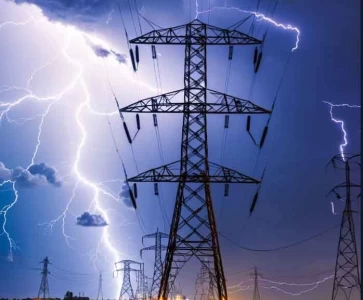Fire Prevention: Role of Lightning Protection in Mitigating Fire Risks
Lightning strikes pose a significant fire risk to buildings, structures, and natural areas, capable of igniting devastating fires within seconds. Lightning protection systems (LPS) play a crucial role in mitigating these risks by safely dissipating the electrical energy of a strike. This article examines the importance of lightning protection in fire prevention, detailing how these systems work and their benefits in safeguarding against lightning-induced fires.
Visit Our Electrical Protection Study Course
Fundamentals of Lightning-Induced Fires
Lightning strikes can generate intense heat and electrical currents capable of igniting combustible materials in buildings, trees, and other structures. The risk of fire is particularly high when lightning directly strikes a structure or when surges induced by a strike affect internal wiring and equipment.
Mechanism of Ignition
The mechanism of ignition in lightning-induced fires involves the intense heat generated by the electrical discharge, which can exceed 20,000°C, instantly vaporizing water in wood and other materials and leading to explosive steam bursts that ignite surrounding materials.
How Lightning Protection Systems Work
Lightning protection systems are designed to control the path of a lightning strike, safely conducting the electrical energy to the ground without causing damage or ignition.
Air Terminals and Conductors
Air terminals (or lightning rods) and conductors form the primary components of an LPS, intercepting lightning strikes and channeling the electrical current safely through conductors to the grounding system.
Grounding System
The grounding system is a critical component of an LPS, providing a low-resistance path to earth for the lightning current, thereby minimizing the risk of fire and electrical surges within the structure.
Benefits of Lightning Protection in Fire Prevention
The installation of a comprehensive LPS offers significant benefits in preventing fires caused by lightning strikes.
Minimization of Fire Risk
By safely dissipating the electrical energy of a lightning strike, LPS significantly reduces the risk of fire ignition in protected structures and nearby areas.
Protection of Property and Life
Effective lightning protection helps safeguard lives and property by preventing the outbreak of fires, which can result in casualties, property loss, and significant economic damage.
Insurance and Compliance
Having a properly installed and maintained LPS can lead to reduced insurance premiums and compliance with building codes and safety regulations, further underscoring the economic and regulatory benefits of lightning protection.
Challenges and Technical Considerations
Implementing an effective lightning protection strategy for fire prevention involves several challenges and technical considerations.
System Design and Installation
Designing and installing an LPS requires specialized knowledge to ensure it is adequately tailored to the structure's specific needs and complies with relevant standards, such as NFPA 780 and IEC 62305.
Maintenance and Inspection
Regular maintenance and inspection of LPS are essential to ensure their continued effectiveness in preventing lightning-induced fires, necessitating ongoing commitment and resources.
Integration with Fire Safety Systems
For optimal protection, LPS should be integrated with other fire safety systems, such as alarms and sprinklers, creating a comprehensive safety strategy that addresses various fire risks.
The role of lightning protection systems in mitigating fire risks cannot be overstated. By safely conducting the destructive energy of lightning strikes to the ground, these systems play a crucial role in preventing fires and protecting lives and property. Given the potential consequences of lightning-induced fires, investing in a robust LPS is a wise and necessary measure for any structure at risk. Through careful design, installation, and maintenance, lightning protection can provide a critical defense against one of nature's most powerful forces, ensuring safety and peace of mind during stormy conditions.

